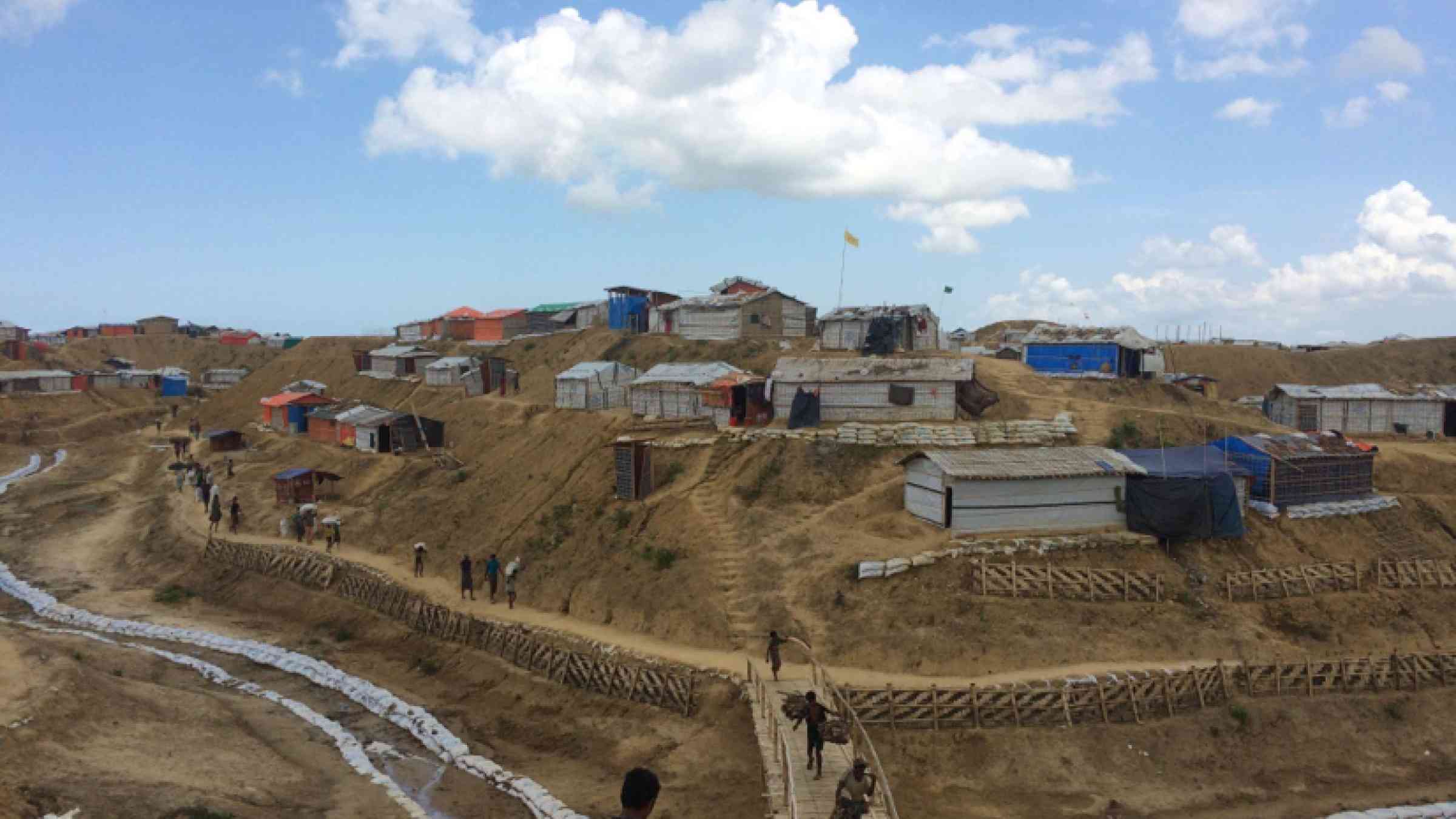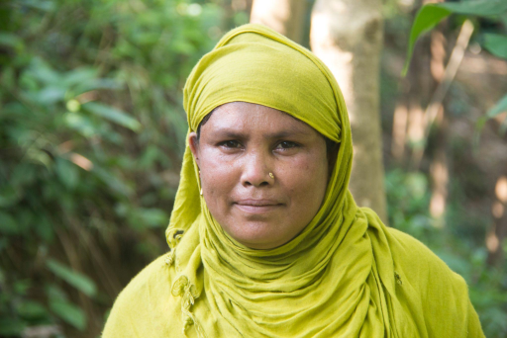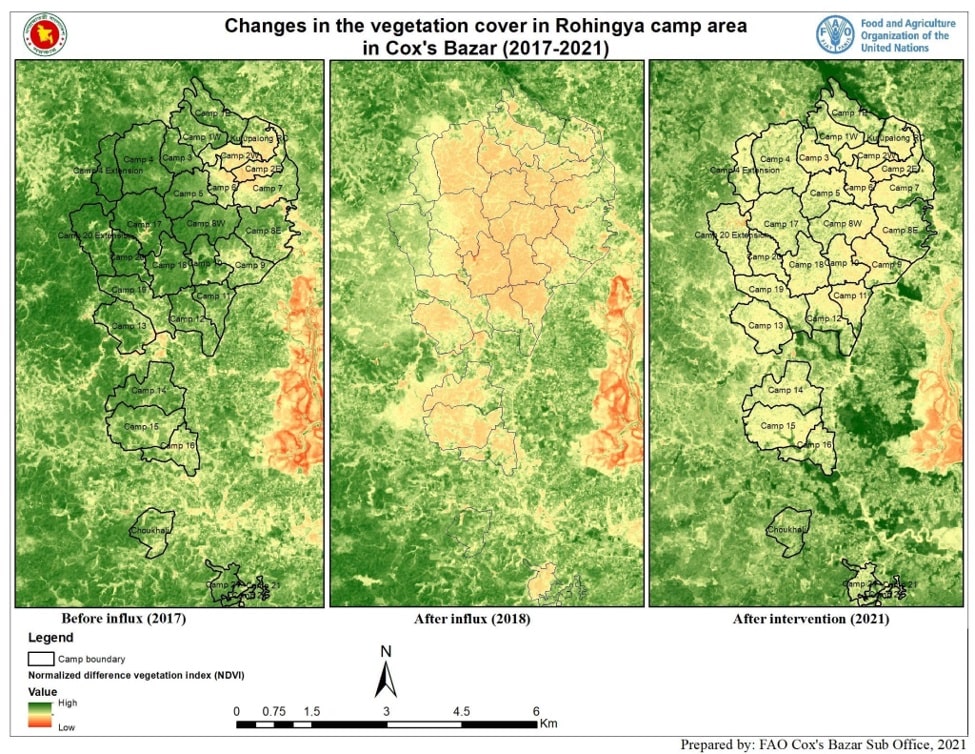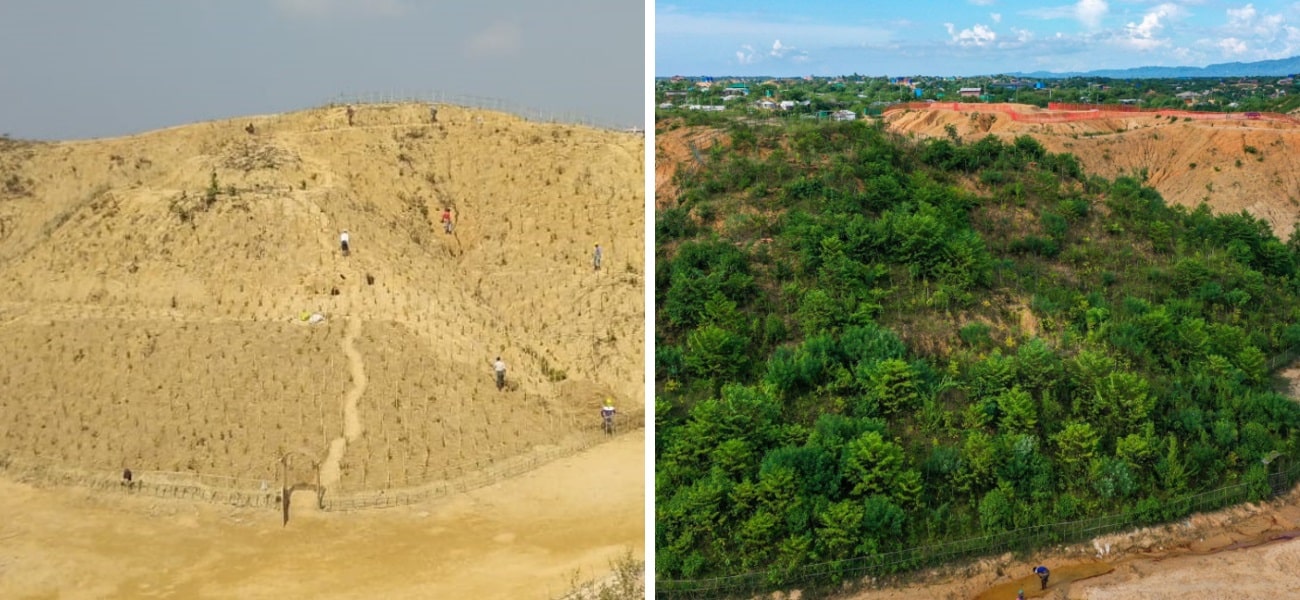Involving Rohingya refugees in reforestation in Bangladesh to reduce disaster risks

Mr. Nasir Ahmed is a Rohingya refugee, who has been engaged in planting trees in Cox’s Bazar in southern Bangladesh, the world’s biggest refugee camp. Mr. Ahmed receives cash for greening the refugee campsites where local forests were affected by the refugee influx in 2017, by far the largest and fastest refugee influx into Bangladesh.
Mr. Ahmed plays an important role in ongoing reforestation efforts which are involving the refugees like him to protect the campsites from the risk of landslides, flash floods, and higher temperatures, which can worsen humanitarian crises.

About a million Forcibly Displaced Myanmar Nationals (FDMNs) currently reside in Bangladesh, which is vulnerable to tropical cyclones and accompanying storm surges, floods, and droughts due to its location in the Bay of Bengal and geomorphic features.
Vast swathes of forests were cleared to build settlements to accommodate the refugees across 34 densely populated camps at Ukhiya and Teknaf sub-districts increasing the risk of disasters. According to the Bangladesh Forest Department, a total of 8,001 acres of forest including 6,164 acres inside camps and 1,837 acres outside, were lost due to the impacts of the influx.
“We didn’t realize there would be severe after-effects of clearing forests. It was unbearable to live without trees under the open sky in a tarpaulin shed with the sun’s blaze in the summer. We saw people die in the camp because of landslides in the rainy season. All hazards occurred due to deforestation,” Mr. Ahmed said in an interview.
Ahmed realized the value of vegetation and engaged in the plantation work as part of the ‘Cash for Work’ program of the Food and Agriculture Organization (FAO), which is implemented by the World Food Programme (WFP). He has been involved in the plantation exercise since 2019 and maintains the plants by regular watering, fencing, weed cleaning, and fertilizer application.
“This helps me earn money through good work. I wish to continue to maintain the plants even if the cash for work program stops in the future,” said Mr. Ahmed, who lives in a Ukhiya sector camp in Cox’s Bazar.
Reviving local species through plantation and stabilizing the soil are two priorities of the reforestation work. FAO, with the Forest Department and other partner organizations including non-governmental organizations, has restored around 2600 hectares of degraded forestland in and around camps in Cox’s Bazar since 2018.
“Reforestation is a disaster risk reduction approach to mitigate deforestation-related hazards and climate change effects. Deforestation in Cox’s Bazar intensifies soil erosion leading to landslides, congestion of the drainage networks, and waterlogging. Deforestation also causes loss of biodiversity, damages natural habitats, and increases the earth’s surface temperature that amplifies extreme rainfall, drought, and fire events,” said Dr. Md. Zillur Rahman, Professor, Department of Disaster Science and Management, University of Dhaka.
Some quick-growing species, like bamboo and vetiver grass, reduce the risk of landslides through a combination of mechanical and biological land stabilization technologies. The harmonization of soil stabilization efforts with construction can prevent soil erosion and loss and reduces airborne particulate pollution.
“Through the cash-for-work program, the camp dwellers are also motivated to work for improving the living environment of the camp dwellers,” said Mr. Tanveer Bhangar, Head of DRR/FFA (Disaster Risk Resilience/ Food Assistance for Assets) of Cox’s Bazar sub-office, WFP. “We ensure gender equality by engaging women in cash for work,” Mr. Bhangar added.
Ms. Salma Begum, a refugee, attested to feeling a sense of empowerment.

“I earn around 3,500 to 4,000 Bangladeshi Taka weekly, and I support my family with the earnings. I want to continue this work in the future, and I always want to work for the betterment of this camp as well as for our next generation,” said Ms. Begum.
Workshops, community consultation sessions, and awareness-raising have supported social and behavioral change in the FDMN community.
“Community engagement is vital for post-plantation care and maintenance which is a mandatory need for sustaining the impact of reforestation for slope stabilization. And for that, FAO promotes a community rights-based approach, which takes account of the needs of rural people, farmers, and communities. Sustainable resource management through community engagement, public awareness, and capacity building of people on how they can conserve forest and biodiversity are important strategies,” said Mr. Marco De Gaetano, Head of FAO Cox’s Bazar Sub-Office.
An assessment in 2020 found that the total incidents of slope failure at Cox’s Bazar in 2019 were 1,400; and the numbers of the affected households were 3,184. However, the number of incidents reduced in 2020 due to the slope stabilization strategies, where reforestation had a major role. The number of incidents of slope failure in 2020 was 267 and the number of affected households was 1,495. The reforestation work is also helping to reduce land temperatures.

“The harmony of the relation between this technical organization [FAO] and the forest department is the key to reduce the forest degradation at Cox’s Bazar. The forest department is also following an approach of involving the community in the management of the forest resources in their localities to bring ownership. The issue of the increased population and subsequent pressure on the natural resources will be managed through engaging communities in the conservation and through increasing their awareness,” said Mr. Humayun Kabir, former Divisional Forest Officer (DFO) of Cox's Bazar in Forest Department who was in-charge in 2018-19.
